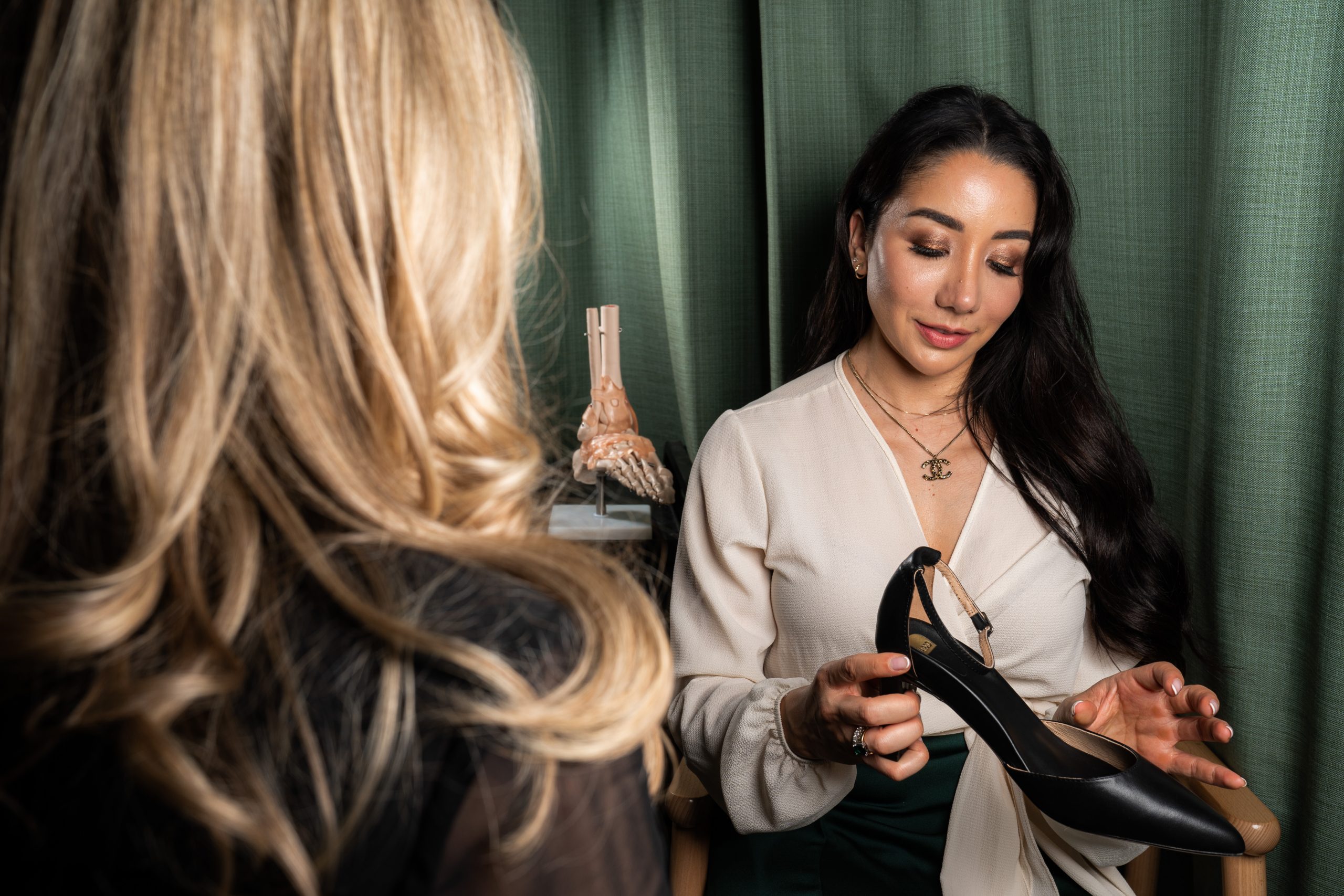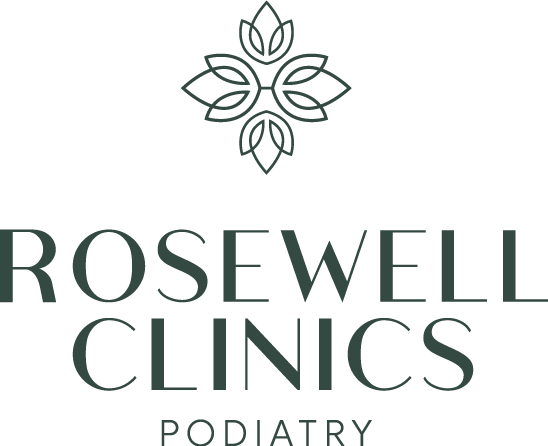Chronic Conditions
Diabetes has been characterised as one of the largest and most preventable global health epidemics in history. Australia is one of the highest ranking countries in terms of prevalence and it is time to take preventative measures to eradicate diabetes, for ourselves and for loved ones. Foot and lower limb care for patients with diabetes is critical, as this disease can deteriorate rapidly through poor vascular blood circulation, causing damage to nerve endings to the feet, impairing the immune system and limiting the wound healing process.
In a nutshell: Diabetes impairs the bodies ability to either produce insulin or make the body more resistant to insulin which is needed to produce glucose (sugar) in the bloodstream so we can function normally in our day to day activities. High levels or fluctuating levels of low and high glucose produces a number of metabolic toxicity effects on the bodies organs and systems. Diabetes doesn’t affect everyone in the same way or at the same rate of severity, symptoms are inclined to progressively deteriorate over time. The most current levels of research and resulting diabetic guidelines advise that participating in regular exercise, maintaining an appropriate diet and varied medical treatment protocols will help to stabilise the blood glucose levels in your body.
Rosewell Clinics Podiatrists will support in implementing a lower limb health strategy that follows the highest levels evidence based practice endorsed by Diabetes NSW and Diabetes Australia. We strongly advise that people with diabetes arrange regular consultations with our Podiatrist’s to ensure you are getting comprehensive care and effective treatment plans.
– Increase in thirst
– Headaches & dizziness
– Blurred vision
– Tiredness and Lethargic
– Passing more urine – Mood Swings
– Unexplained weight loss (Type 1)
– Weight Gain (Type 2)
– Cuts that heal slowly
– Skin infections
– Dryness of the skin
– Diminished hair growth
– Thickening and crumbling of nails
– Sensory changes such as: pins and needles, numbness, tingling, ants crawling on your skin sensation, heat.
– Cramping
– Changes in your foot posture
– Muscle weakness.

Arthritis, Connective Tissue & Hypermobility Conditions
Arthritis is a broad medical term for multiple inflammatory conditions affecting joints, muscles and bone. These conditions often accompany stiffness, pain, swelling and redness in the affected joints. Types of arthritis include rheumatoid arthritis, osteoarthritis, gout, juvenile arthritis, reactive arthritis, psoriatic arthritis, and ankylosing spondylitis, amongst others. Arthritis can have profound impacts on quality of life and overall wellbeing due to acute and chronic pain, physical limitations and management of the condition. Living with this condition often amounts to significant psychological distress (including anxiety and depression), and may be accompanied by withdrawal from social, community and work related activity.
Rheumatoid arthritis is a progressive autoimmune disorder, and is a one of the most common forms of inflammatory arthritis with an estimated 60 – 120 million people worldwide suffering from the disease (notably the gender ratio is female dominant at 3:1).
Rheumatoid arthritis is a self-limiting disease that attacks the lining of your joints causing structural damage, typically presenting with symmetrical manifestations. It is paramount that our Podiatrists coordinate with a skilled Rheumatologist, to support you. Our goal as your health management team is to:
1. Prevent irreversible joint destruction: so you can stay on the move, pain free
2. Bring active disease to disease remission, control inflammation with medication
3. Relieve pain and optimise body function with podiatric management and other allied health interventions
The muscle is unable to move frequently, decreasing oxygen and blood flow that ideally flushes out acidic compounds and inflammation. Muscles continue to tighten to compensate for the pain.
The occurrence of myofascial trigger points, is the body feeding back to us through a protective response to:
– Prolonged posture (e.g standing/sitting at work for long hours)
– Injury — muscles will tighten in an attempt to reduce the intensity of the injury
– Change in muscle loading or regular activity (e.g increased the number of sessions/volume/intensity in any physical activity)
– Quick and unexpected movements (e.g change in direction when walking)
– Nerve impingements — muscles try to protect the nerve by tightening
– Illness
– Nutritional deficiencies and or metabolic/endocrine conditions
For more Information on Rheumatoid arthritis please visit https://arthritisaustralia.com.au/what-is-arthritis/types-of-arthritis/
Please click on the links to discover more on each:
Gout
https://arthritisaustralia.com.au/types-of-arthritis/gout/
Ankylosing Spondylitis
https://arthritisaustralia.com.au/types-of-arthritis/ ankylosing-spondylitis/
Psoriatic Arthritis
https://arthritisaustralia.com.au/types-of-arthritis/psoriaticarthritis/
Juvenile Idiopathic Arthritis (JIA Children)
https://arthritisaustralia.com.au/typesof-arthritis/jia/
Chilblains / Perniosis (children)
https://arthritisaustralia.com.au/types-of-arthritis/chilblains/
Fibromyalgia
https://arthritisaustralia.com.au/types-of-arthritis/fibromyalgia/
Growing Pains / Benign nocturnal limb pains (children)
https://arthritisaustralia.com.au/types-of-arthritis/growing-pains-benign-nocturnal-limbpains-bnlp/
Hypermobility spectrum / syndrome disorders
https://www.hypermobility.org/hsd-jhs-heds
https://arthritisaustralia.com.au/types-of-arthritis/hypermobility-syndromes/
Lupus (Systemic Lupus Erythematosus) https://arthritisaustralia.com.au/types-ofarthritis/lupus-systemic-lupus-erythematosus/
Reactive Arthritis
https://arthritisaustralia.com.au/types-of-arthritis/reactivearthritis/
Scleroderma
https://arthritisaustralia.com.au/types-of-arthritis/scleroderma/
Severs Disease (Traction Apophysitis)
https://arthritisaustralia.com.au/types-ofarthritis/severs-disease/
The most common joint disease, Osteoarthritis is the leading cause of chronic disability in older adults (typically affecting those aged 45+ years and is female dominant 2:1).
Osteoarthritis is a complex disorder of the whole joint, including cartilage, ligament, muscle and bone. Commonly known as the ‘wear and tear’ arthritis, more advanced research reveals that joint is working extra hard to repair itself. The role of a podiatrist on your team is make sure that you’re strong and able to move freely with structured treatment plans that can delay or avoid surgical management.
For more information on Osteoarthritis please visit https://arthritisaustralia.com.au/what-isarthritis/types-of-arthritis/
Osteoporosis is ‘a systemic skeletal disease characterised by low bone density and deterioration of bone tissue, with a consequent increase in bone fragility and susceptibility to fracture’. Due to the very nature of Osteoporosis and its higher rates of disability, morbidity and mortality, it is of significant public health concern.
The prevalence has an expectancy to affect and reach 6.2 million Australians by 2022 (affecting 23% Females and 6% of Males over the ages of 50).
The impact of osteoporosis is quiet significant:
– It imposes higher risk of fracture. Fracture statistics, therefore also provides understanding into the benefits of its prevention.
– Minimal trauma fractures are common in people over the ages of 50 with the hip (32%) being one of the more serious fractures. In 2017-2018 there were 93,321 people hospitalised minimal trauma fractures, whom 72% were women.
It is is paramount that you have an endocrinologist, along with a coordinated podiatrist on your team. At Rosewell we will make sure you have a leading multidisciplinary team looking out for you.
Our goal as a team is to:
– Prevent falls risk by improving stability and comfort with your lower extremities, starting particularly at the feet, as it is the foundation of supporting all your body weight. Footwear and biomechanical assessments are quite essential. 18 Friday, 18 September 2020
– Reduce high stress areas that may be susceptible to fracture — we do this by evenly redistributing your bodies force over the bones and joints. Custom foot orthotics are a great device to achieve this goal.
– Strengthen the musculoskeletal system with physical therapy, as it can encounter the loss of bone and muscle mass.
Your unique biomechanics and presenting lifestyle are thoroughly assessed at Rosewell so we can optimise your health and wellbeing with treatment plan suited to your outcomes.
